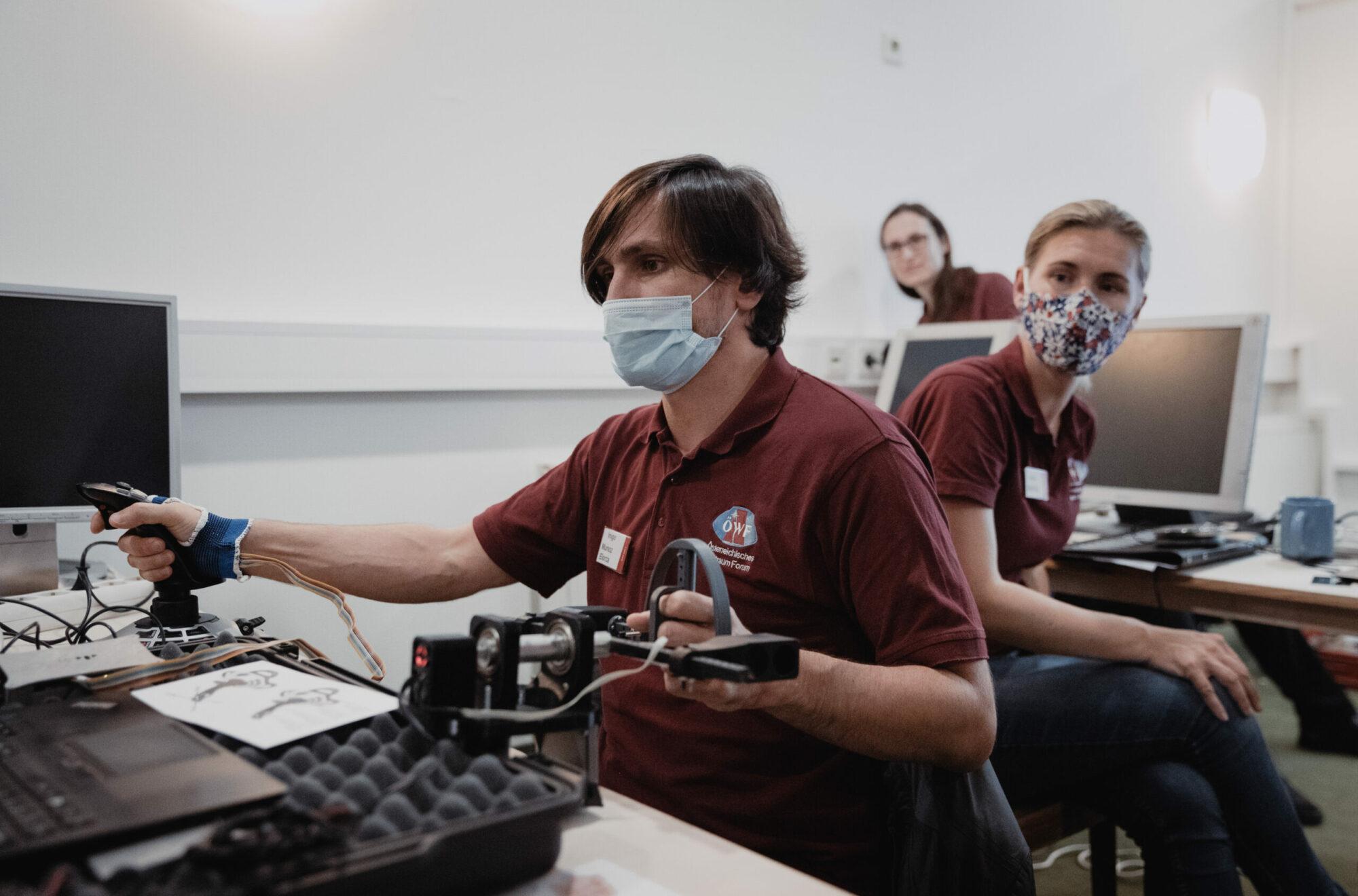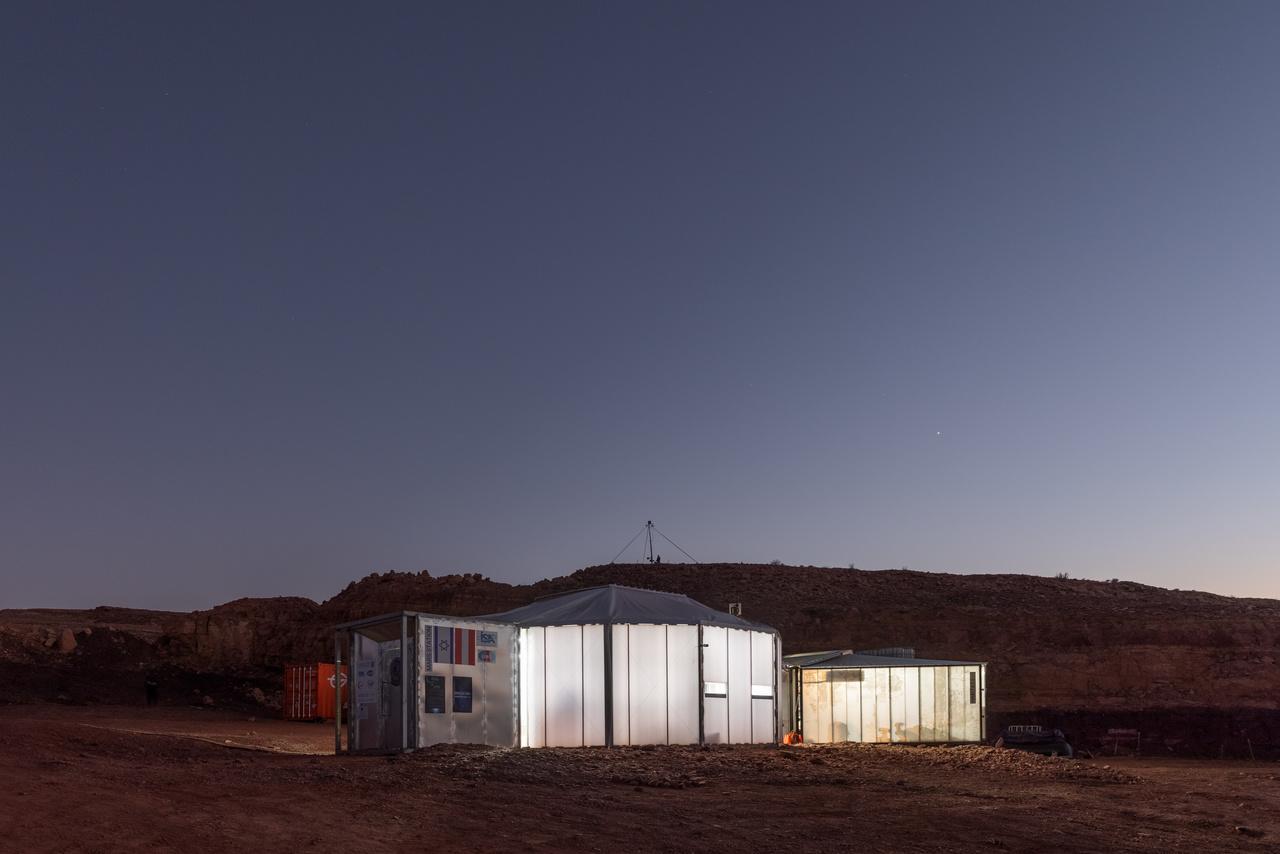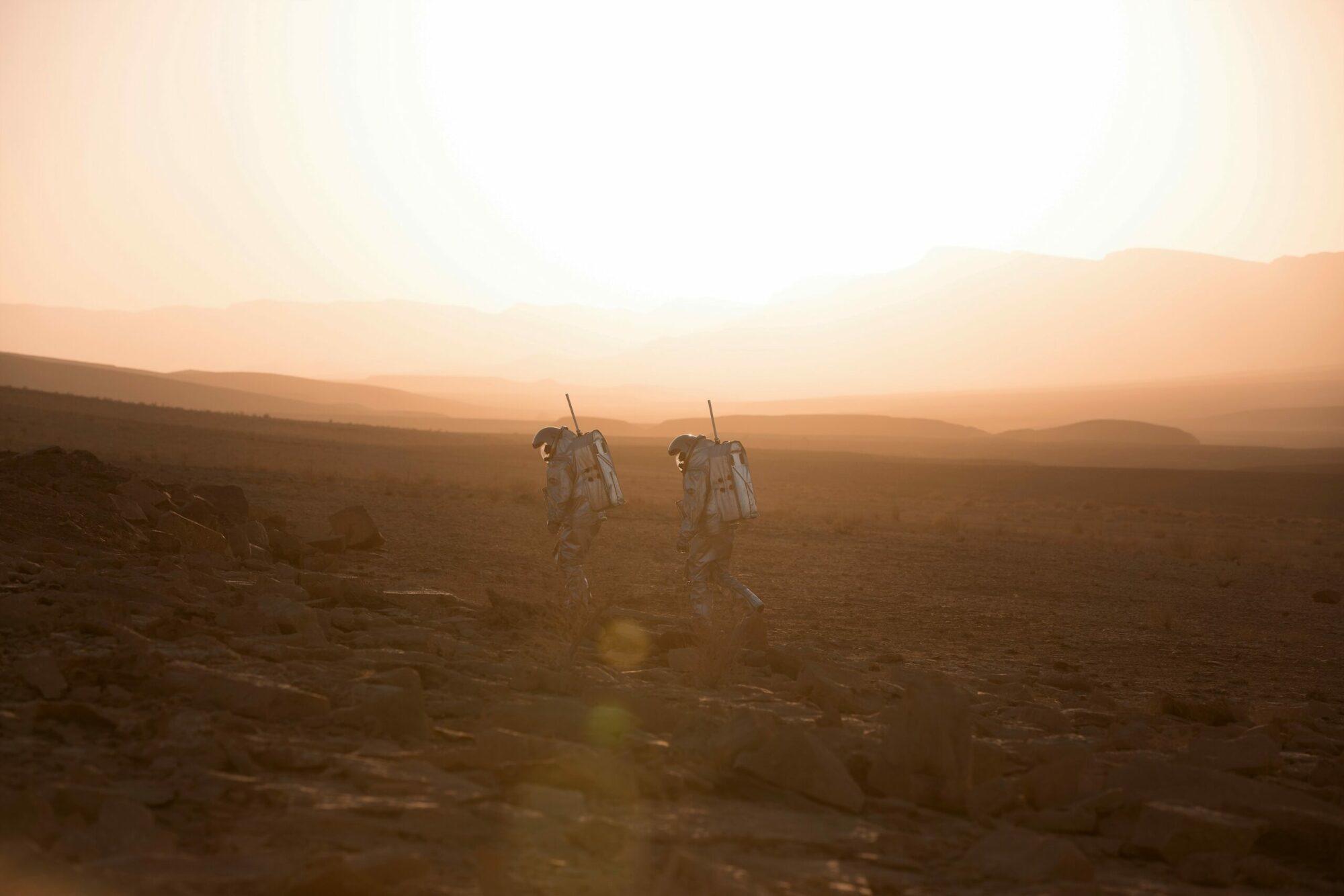The control interface for teleoperated robots developed by ISR-Lisboa researchers is currently being tested in an integrated Mars analog field mission in the Negev Desert, Israel – the AMADEE-20 Mars simulation. In colaboration with ISCTE-Instituto Universitário de Lisboa, ISR-Lisboa is responsible for the robotic experiment known as Merop (Remote operation of planetary ground robots using advanced human-machine interfaces).
To see how we started in the mission click in the following link https://bit.ly/3E8P5M5.
But what is the function of the created interface and why is it necessary?
“Astronauts are exposed to high temperature ranges, cosmic radiation, meteorites and dust storms in a hostil environment as Mars” explains Rodrigo Ventura, researcher at Instituto de Sistemas e Robótica “so the use of teleoperated robots is usefull for the execution of small tasks, preventing unnecessary risks”. It’s also important to highlight that each astronaut suit weights 60 kilograms and takes 3 hours to dress.
Operating a robot from the base without visual imput compromises its performance (the environment perceived by the operator doesn’t corresponde to the reality itself). “Thats why we created this special interface that gives visual and haptic data trought tactile informations “, explains Rute Luz, a PhD student involved in the project. “Using two devices – a sensory glove and an attitude and traction feedback device – the operator can feel the robot movement in his hands.”
Using vibration patterns, the sensory glove indicates the different traction states of the robot. “This type of information changes if the rover is stuck, if it encounters obstacles or if its losing traction and its sliding” adds Rute Luz. Attitude and traction feedback provides orientation, showing if the robot is in the horizontal, inclined or vertical plane preventing unnecessary falls that could damaged the rover.
The devices are being tested by analogous astronausts during four weeks, from 4 to 31 October, improving the efficiency of rovers teleoperations in Mars exploration. AMADEE-20 integrates a complex set of experiments in the fields of engineering, geoscience and human factors (you can see more in detail here https://bit.ly/3jr03V5) coordinated by João Lousada, Instituto Superior Técnico alumni.
Simulating Mars Human-robotic surface activities in terrestrial analogs (with similar conditions to Mars) has evolved into an efficient tool for developing exploration mission architectures. They facilitate to understand the advantages and limitations of future Human planetary missions, becoming an added value for the development of remote science operations, helping to understand the constraints and opportunities of the technology and workflows.
You can find more about the mission in https://oewf.org/en/amadee-20/.
Supporting the field team, there is a Mission Support Center, located in Innsbruck, Austria for the duration of the Mars Analog Mission, and the On Site Support (6-12 members, provides additional support to the analog astronaut crew without interacting with them).
While the Mission Support Center supports the crew of the analog astronauts on simulated “Mars” (i.e. the Negev desert) in performing the experiments and in being the only point of contact between “Earth” and “Mars”, On Site Support take care of any infrastructure that needs to be present on Mars for the mission to proceed smoothly.
Amadee-20 involves the Austrian Space Forum (https://oewf.org/en/), responsible for other simulated missions to Mars and for the experiments selected, Israel Space Agency and D-Mars (Israely company). If you’re curious about amadee and previous analog missions, you can find more information here https://bit.ly/3E9DNqT.
If you want to simulate Mars with us, follow the hastags #AMADEE20 and #simulateMars on Twitter.










